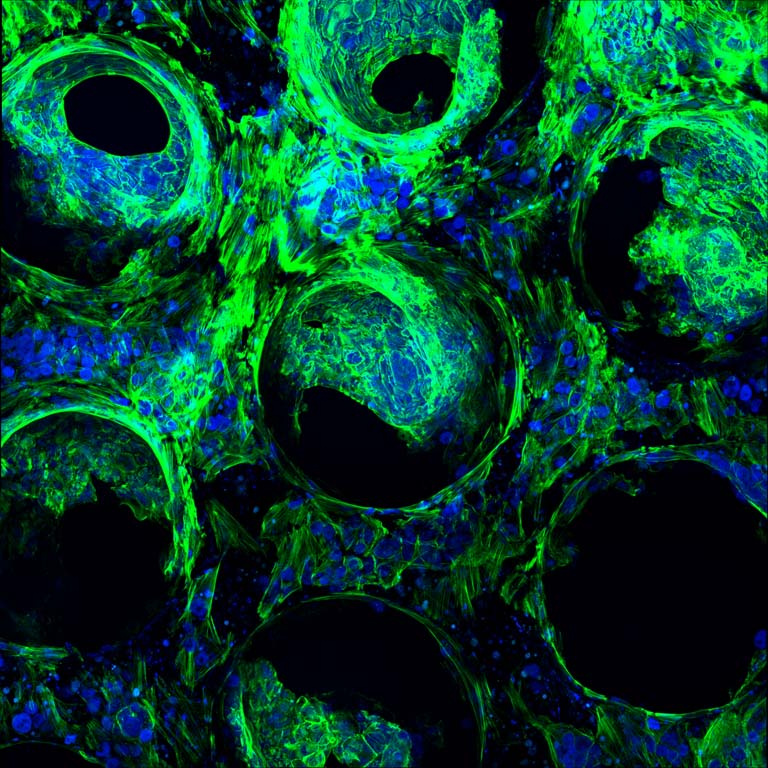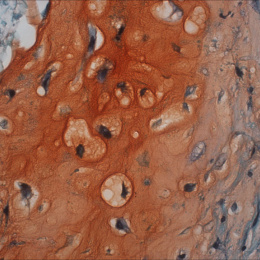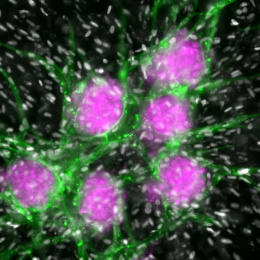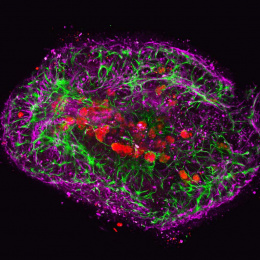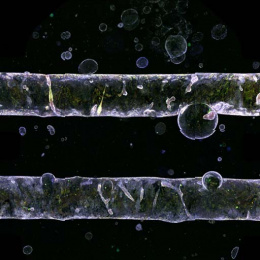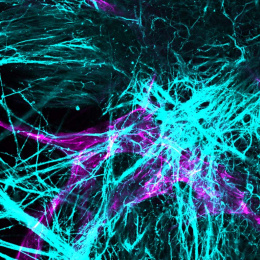Liver Cells Organize on a Bioreactor Scaffold 1
Liver Cells Organize on a Bioreactor Scaffold 1
Alex Wang
MIT Department of Biological Engineering, Koch Institute at MIT
These series of images depict hepatocytes in a pump-driven bioreactor called the LiverChip. The grid of holes in the scaffold are channels that allow oxygenated media to flow out through them, simulating blood flow. Hepatocytes, the main functional cell type in liver, are seeded on top of the scaffold and organize inside and on top of the channels.
Growing healthy, physiologically relevant liver tissue in the lab will allow us to utilize it for a wide range of biomedical applications. In this proof-of-concept experiment, we demonstrate that fresh liver cells isolated from rats can form beautiful tissues inside the bioreactor and last for 1 week; these sensitive cells would not be nearly as robust in a traditional culture format. In this image, the rat cells are visualized by staining their nuclei (blue, DAPI) and their cellular filaments (green, phalloidin).
